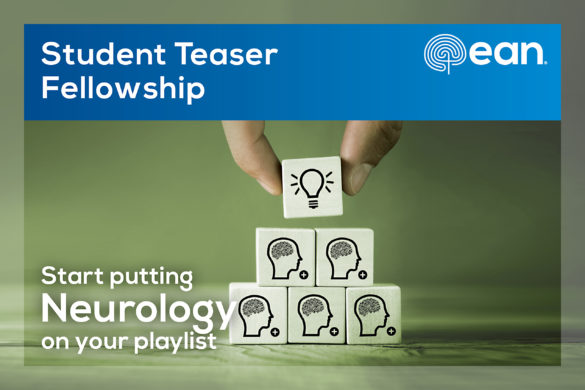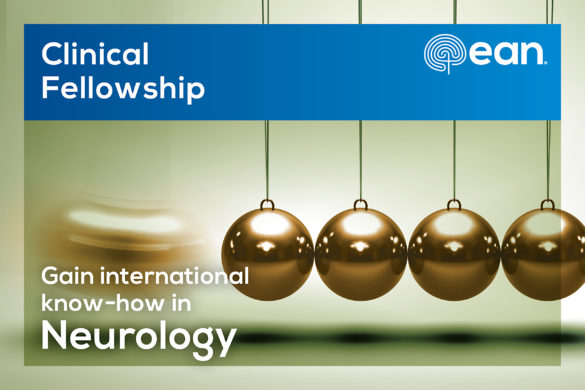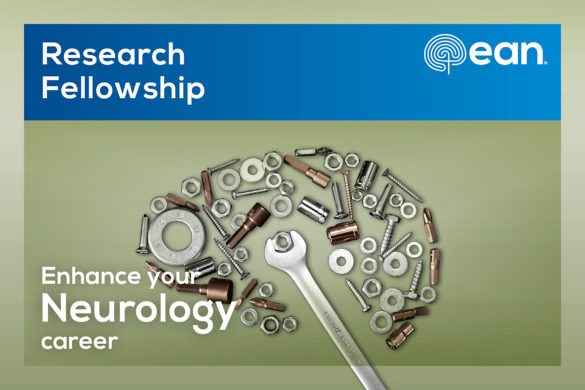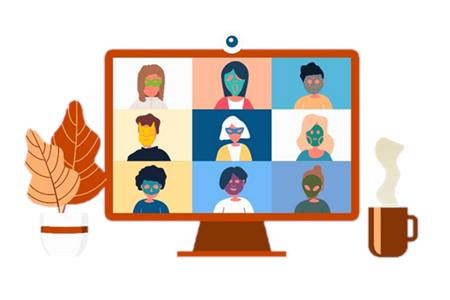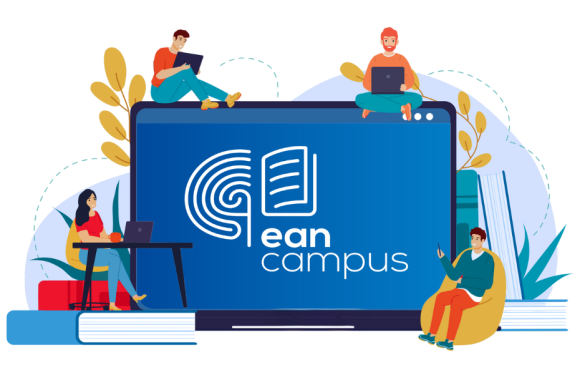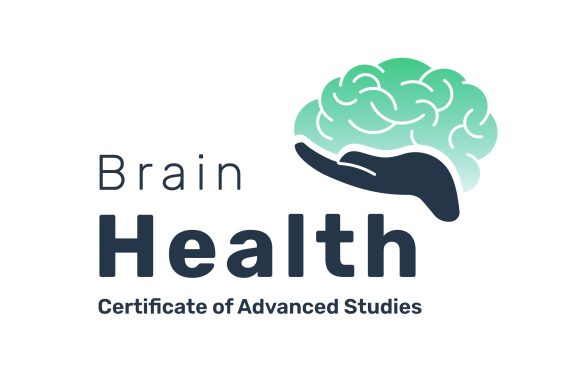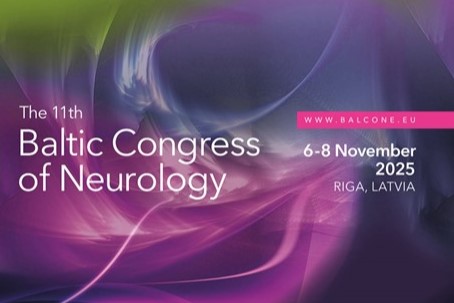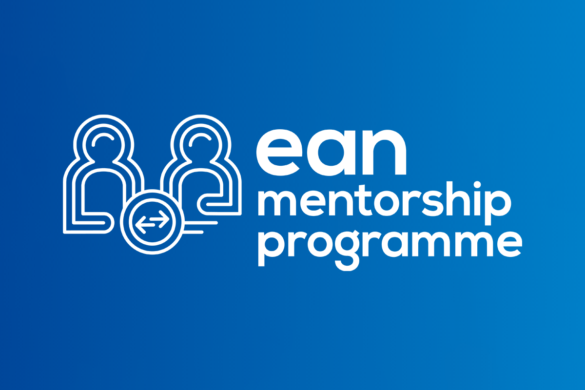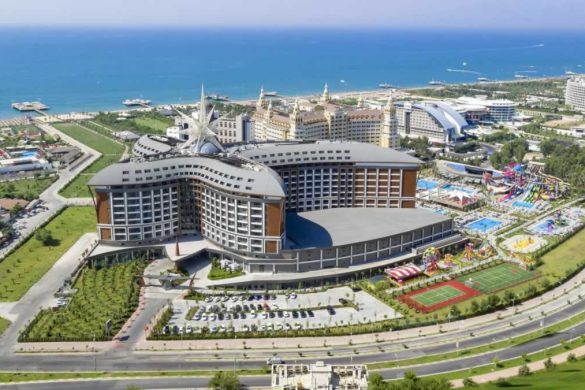Report from Anastasiia V. Busygina from the Russian Federation visiting the Department of Neurology at Glostrup Hospital in Glostrup, Denmark under the supervision of Professor Jes Olesen.
I had 5 wonderful weeks at Glostrup Hospital (Denmark) with the “Department to Department Co-operation programme of EFNS 2014”. I’m a neurologist at the International Medical Clinic of Headache “Europe-Asia” (Ekaterinburg, Russia). I have great interest in headache and vascular pathologies of the neurological system. I’m writing the research work about headache in patients with hemorrhagic stroke, so that possibility to be in one of the biggest Headache Centers of Europe in Glostrup University Hospital had special importance for me. I’m very grateful to this programme for the chance to gain new experience. Also, I would like to thank Professor Jes Olesen for inviting me to the Danish Headache Center. I’m very grateful to the chief of the Danish Headache Center, Professor Rigmor Jensen for her help and support.
I could see the work of Professor Messoud Ashina, Dr Aydin Gozalov, Dr Lars Bendsen, Dr Thue Nielsen at the Headache Center. And also the work of other doctors at the stroke unit, epilepsy clinic and dimension department. It was so nice to work with them. I acquired valuable skills (atraumatic lumbar puncture, occipital blockade, botulinum therapy). Now I have more experience in the diagnosis and treatment of primary and some kinds of secondary headache.
The first two weeks were devoted to headache. Every day I watched the work of Dr Aydin Gozalov and Professor Messoud Ashina who explained to me everything about their patients. Sometimes I could see the work of Professor Jes Olesen. We discussed different kinds of headache, their diagnostic criteria and treatment. Dr Lars Bendsen and Dr Thue Nielsen showed me some interesting cases.
The third week was devoted to vascular pathology of neurological system. I attended the emergency department for patients with stroke and watched the work of Dr Aydin Gozalov. I was able to see trombolitic therapy and the whole protocol of it. At the end of that week I attended the rehabilitation department.
The forth week was at the Epilepsy Clinic and Parkinson and Dimention department. Dr Katarzina Cebula showed me the workof those departments. I learned new kinds of treatments and began to understand some things in Epilepsy and Parkinson disorders. I learned the best steps in the treatment of dimention.
I spent my last week at the Headache Center, where I could see the technique of botulinum therapy and occipital blockade. I watched the work of psychologist and physical therapist with patients who have difficult headaches. I saw methods, different kinds of exercises and trainings for these patients.
I was also able to see the scientific work of postgraduate students of Glostrup Hospital, Copenhagen University. It was really helpful for me. At the end of the trip I attended the 4th Europian Headache and Migrain Trust International Congress.
I would like to mark the beauty of Denmark´s nature. It’s wonderful. People of this country are very kind and responsive. Denmark has lots of different interesting and beautiful places. I visited some of them (Frederiksborg Palace, the National Gallery of Denmark, Ny Carlsberg Glyptotek). I was very much impressed. I would like to thank the EFNS for giving me a chance to take part in this programme.
***************************************************
Report from Thea Shengelia from Georgia visiting the Department of Neurology at Pendeli Children’s Hospital in Athens, Greece under the supervision of Professor Antigone Papavasiliou.
I spent 6 weeks (13 October-26 November) of my Department-to-Department programmne under Dr Antigone S. Papavasiliou’s supervision at Neurology Department of Pendeli Children Hospital, Athens, Greece. During this time I took part in daily activities of the department. I attended teaching rounds for in-patients twice a week, and out-patient clinics by Dr Antigone and Dr Evangelos twice a week, I observed Botulinum Toxin injections in patients with cerebral palsy. During my observer-ship time I also had an opportunity to closely watch EEG record interpretations, and visited the intensive care unit and the rehabilitation room of the hospital.
The in-patient clinic consisted of 12 beds in 3 wards, I encountered children with some rare syndromes such as Rett’s syndrome, disease of basal ganglia, neurofibromatosis, duchenne’s muscular dystrophy, rare neuro-metabolic and epilepsy syndromes. Many children with neurodevelopmental disorders and ADHD were attending out-patient clinics of Dr Antigone. I watched the process of the clinical and instrumental investigations, how the modern advanced MRI, Genetic, metabolic, and other tests were used, and how the management and treating strategies were planned by my colleagues.
During my observer-ship period I also had an opportunity to attend the 9th epilepsy congress of Greece which took part in Athens on 17-19 October.
The hospital team was very attentive and very friendly, they all eagerly shared their experiences and it was a great pleasure of me to be with them during this period. The Greek colleagues were very polite and always ready to help me to resolve the tasks and aims. I would like particularly mention my social programme in Athens: I visited ancient museums, I saw the sights of Acropolis in the afternoon times, and on my weekends I had trips to Nafplio which is a beautiful small sea-port town situated half an hour away by car from Athens, and to Kea which is a small nice island also not far from Athens.
At the end of my letter I would like to thank the whole EFNS (now EAN) team for giving me such a great chance to see how the neurology is done in Europe and make friends and relationships with my colleagues in Greece. I hope my Greek experience will be useful in my everyday work in terms of updating my skills and knowledge and also in terms of when there is need to be able to exchange opinions with my European colleagues.
With Kind Regards,
Thea Shengelia
***************************************************
Report from Adnan Haidar from Syria visiting the Department of Neurology at the Medical University of Hannover, Germany under the supervision of Professor R. Dengler.
Dear all,
It’s a great opportunity to be in Hannover high medical school (MHH), department of neurology under the supervisory of Professor Dengler. It’s a high level department with all modern technics, educational systems, and professional staff. The main purpose of my visit was about neurophysiological investigations and movement disorders and actually I had the chance to extend my experience in EMG, EEG, NCS, evoked potentials, and Botox injection for neurological problems. I also visited the stroke unit and emergency room for short time.
Sometimes the German language was a problem to deal with others, but not that big of a problem especially when most of the doctors and even some patients spoke English. Beside the medical side, Hannover is a nice city with magnificent features like gardens, museums, restaurants, shopping possibilities… but expensive in living and transporting.
In fact my visit was very useful for me, especially from the scientific side so I am considering to learn German and get a license as a neurologist in the EU. I hope to see the war in my country end soon and to start with a new and improved health system.
Thanks to EAN @ MHH,
Adnan Haidar.
***************************************************
Report from Anna Karlinska from Poland visiting the Nuffield Department of Clinical Neurosciences at John Radcliffe Hospital, United Kingdom under the supervision of Doctor Maria Isabel Leite.
Thanks to the EAN department-to-department programme I was able to visit and work for 6 weeks at the Nuffield Department of Clinical Neurosciences (NDCN), University of Oxford in the United Kingdom. The principal aim of my visit in the NDCN was to extend my knowledge in the area of neuroimmunological disorders. The friendly supervision of Maria Isabel Leite gave me an exceptional opportunity to experience the everyday work of the NDCN clinical neurologists and researchers from the neuroimmunology group led by Angela Vincent.
NDCN is a reference centre in the UK for neuromyelitis optica, paraneoplastic and cell-surface CNS autoantibodies-mediated disorders and myasthenia gravis. Therefore, both in the ward and in outpatient clinics I was able to see a wide range of patients with those rare conditions. I also learnt not to be afraid of long term aggressive immunosuppressive treatment, which has already impacted approach to pharmacotherapy of immune-mediated disorders in my own institution. The laboratory team of Angela Vincent advised me on performing the assays detecting cell-surface CNS autoantibodies. As NDCN is a university centre, I was regularly attending the scientific meetings, journal clubs and case-report meetings that concerned either antibody-mediated disorders, demyelinating syndromes or general neurology.
To sum it up, the EAN programme allowed me to visit one of the world-wide opinion-leading neuroimmunology centres. It gave me invaluable experience, and encouraged me to implement their clinical approach in my own institution. In addition, we have just successfully launched new assays in our neuroimmunology laboratory.
***************************************************
Report from Laura Piccolo from Italy visiting the Department of Clinical Neurosciences at the University Hospital of Geneva, Switzerland under the supervision of Professor Roman Sztajzel.
The three-months period I spent in Geneva at the Neurovascular Unit directed by Prof Roman Sztajzel has been full of interesting activities, that have really given substantial contribution to my professional growth and have also enriched me from a personal point of view.
I have mainly been involved in two research projects which I have followed in first person and which I am going to further develop in the near future. Both projects concern the utilisation of transcranial color-coded Doppler as a tool to guide clinical practice; this double aspect gave me the possibility to both improve my technical skills in performing TCCD examination and to update and/or consolidate my knowledge on ischemic stroke treatment and diagnostic etiological workup according to most recent guidelines.
My research activity has occured in parallel to a more strictly clinical one: I flanked neurosonographers in performing sonological evaluation of supra-aortic and intra-cranial arteries and I participated at the neurovascular teams medical examinations and at multidisciplinary discussions on most difficult clinical cases. Finally, I attended seminars and meetings which the Neurological Department periodically proposes and which deal with both cerebrovascular and other neurological topics (epilepsy, neuromuscular disorders, neuroimmunology, neurooncology, cognition, …).
For all these reasons I am greatly satisfied with this abroad experience, which I judge highly educational and which I consider of foundamental importance for the acquisition of my own professional maturity. I think that spending a period of time and working in a foreign reality, seeing with one’s own eyes and learning how professionists exercise their proficiency in other countries´ contexts is a priceless opportunity to complete a medical study course, that could allow future specialists to develop also in their own country the expertise assimilated abroad. And for this reason I would like to express again my thankfulness to EAN, for the sensitivity it has always demonstrated to the topic of Department-Department exchange.
It is maybe reduntant to say that I have no negative remarks but only good opinions upon the Neurological Department that received me, and the Neurovascular Unit in particular. I am deeply grateful to every practitioner I met (physicians, technicians, nurses, healthcare assistents) for all teachings and advices, as well as for all the informal moments spent toghether. In particular I would like to thank Prof Sztajzel, who I knew before mainly for his scientific skills and whom I appreciate also for his professional and human qualities; to him all my admiration and gratitude.
***************************************************
Report from Nikola Veselinovic from Serbia visiting the Neurology Clinic at the Justus-Liebig University Clinic of Marburg and Giessen, Germany under the supervision of Professor Manfred Kaps.
I visited the above-mentioned Neurology Clinic which has an excellent and widely recognised reputation in neurosonology and stroke treatment and research. The clinic itself comprises of a comprehensive stroke and post-stroke unit, intensive care unit and a general neurology ward, with over 60 beds for in-hospital neurology patients.
A so-called basis for my observation and education training during the time I have spent there was a neurosonology laboratory. Sonologic modalities practiced on everyday basis include extracranial color-coded duplex, transcranial color-coded sonography, microemboli detection, superfitial temporal artery examination, retrobulbar circulation and optic nerve sheath diameter assessment, assessment of fasciculations and peripheral nerve system, and transcranial brain parenchyma sonography, among others. All the modalities are used for hospitalised and ambulatory patients, but also for selected patients who present to the emergency care department, e.g. with the clinical presentation of stroke or TIA, monocular blindness, presumed arterial dissections etc. The latter (ultrasound in emergency setting) gave me an excellent overview of the spectrum of clinical application of neurosonology.
For me, the greatest value in obtaining new knowledge was a chance to receive expert face to face education for transcranial color-coded sonography (TCCS), with particular emphasis on TCCS presentation of various cerebrovascular pathologies, intracranial TCCS anatomy, common pitfalls during the examination and assessment of intracranial venous system. A variety of pathological cases were present: from atherosclerotic and non-atherosclerotic intracranial stenoocclusive disease, extra- and intracranial dissections, post revascularisation patients, steal phenomena, complex intracranial vascular pathology etc.
During the education I have not only observed, but I also had a chance for practicing my sonographic technique, which has substantially improved. I was taught a variety of techniques used for TCCS, but also some for more demanding and challenging cases in extracranial doppler. As a pinnacle of my visit, I had an opportunity to examine several movement disorder patients with intracranial deep brain stimulators by means of transcranial brain parenchyma sonography, for the purpose of assessing the position of the DBS system (the procedure will be introduced in my home institution next year, so this is of substantial value).
Apart from neurosonology, I received a general insight in the functioning of the stroke unit, intensive care center and emergency department. Activities concerning the stroke team organisation and management of patients were presented and included everything from the examinations in the emergency department, neuroimaging protocols, first-line therapy incl. i.v. lysis, to the general management of patients in stroke and intensive care units. The so called stroke protocol was explained and shown in real life situations. I have also seen a number of high-end devices concerning patient monitoring and drug delivery, diagnostic tools and ultrasound devices. A unique possibility was to see the application of hypothermia in the most severe stroke cases, with a detailed elaboration of the systems and protocols used for this purpose. It was also interesting to obtain knowledge in the field of most complex and critically ill neurological patients, including for example indications and use of decompressive craniotomy in a tertiary hospital setting, intracranial pressure monitoring etc.
In order to manage my time optimally, I was gratefully provided with a separate room which I could use whenever I wanted. A body of up to date literature was also provided for the purpose of learning. From my perspective, I had an excellent insight into a comprehensive neurology hospital, and I improved my knowledge substantially, particularly in the field of neurosonology.
N.B. As for the general costs during my visit, they were as follows: 1050 eur for the accommodation, cca. 350-400 eur for the trip (by car), and cca. 700 eur for other costs of living (food, transportation, medical insurance etc.).
Best regards,
Nikola Veselinovic, MD




